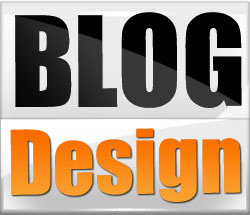If you’re a new blogger, one of the biggest decisions you will have to consider as you try to establish a successful internet presence is the design and layout of your blog. Despite the well-known saying that content is king, a blog’s design is just as important, not for the search engine indexing spiders, but rather for the human audience that will visit your blog.
Here are a few ideas to help you create a well-designed blog that looks great and keeps your visitors coming back for more great content day after day.
Support Your Content
 Whatever design and layout you select for your blog, be it a template or something of your own creation, make sure that it supports your content. For example, if you are a photographer who wishes to use your blog share your photography, then use a layout that does not interfere with your art. Likewise, if you’re writing longer posts, then a layout that makes it easier for a reader to read might work best. Take a look at some of your favorite blogs to see what other bloggers do; do not be afraid to borrow design elements from your favorite blogs. The design of the blog should compliment your content; the design should blend in, even if it has excellent images, and not stand out in any way.
Whatever design and layout you select for your blog, be it a template or something of your own creation, make sure that it supports your content. For example, if you are a photographer who wishes to use your blog share your photography, then use a layout that does not interfere with your art. Likewise, if you’re writing longer posts, then a layout that makes it easier for a reader to read might work best. Take a look at some of your favorite blogs to see what other bloggers do; do not be afraid to borrow design elements from your favorite blogs. The design of the blog should compliment your content; the design should blend in, even if it has excellent images, and not stand out in any way.
Make it Reader Friendly
Your blog’s design and layout should also be friendly to the reader. This means that all elements, from the title of your posts to your blogroll in the sidebar, should be easily accessible to the reader. When a reader clicks on a post, it should layout cleanly on the post page, for example. A reader should be able to glance at your blog’s main page and figure out what exactly is important and how he or she can access it quickly. Don’t make your reader go searching for good content.
Decrease Load Time
On the internet, time is extremely valuable. Forcing a reader to wait even a few extra seconds to load your blog can spell disaster for your bounce rate. This means that you should limit the kinds of content that will affect load rates: flash animations, excess code that creates jiggling hyperlinks, and other gimmicks. Of course, you can have a few more intricate bits of content to load; however, just make sure you test it every now and then to make sure it’s not hampering a reader’s ability to get to your content.
Use an Intuitive Comment System
An important feature of any blog is the presence of an intuitive comment system. Comment systems allow the conversation that you’ve begun with your blog posts to continue among your readership. If you have a comment system that makes it harder for a reader to engage in that discussion, you’ll quickly lose your audience. A comment system that loads comments quickly, defeats spam, and allows for readers to subscribe to the conversation is a pretty standard, but worthwhile feature to have on your blog.
Place Effective Advertising
Finally, we all know how important it is to monetize our blogs in some form or another; however, we should be very selective in the kinds of ads we seek out and in how many we place on our blogs. Too many advertisements can clutter a blog and frustrate your readers. Likewise, advertisements that popup or force readers to close them before they can access your content can also turn away valuable traffic. You have to find a balance between the right amount of advertising revenue and accessible content. Look at some of your favorite blogs and see how they incorporate ads into their design and layout.
Mariana Ashley is a freelance writer who particularly enjoys writing about online colleges. She loves receiving reader feedback, which can be directed to mariana.ashley031@gmail.com.
